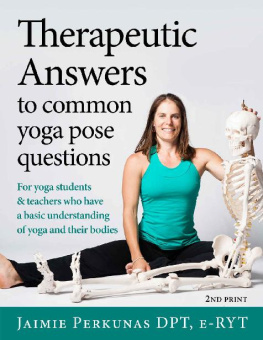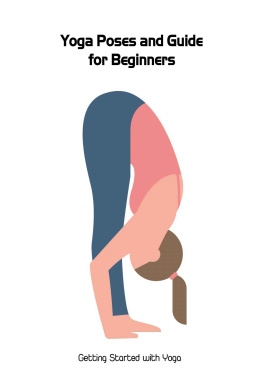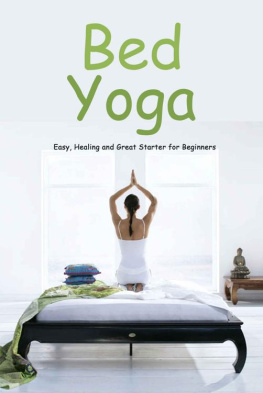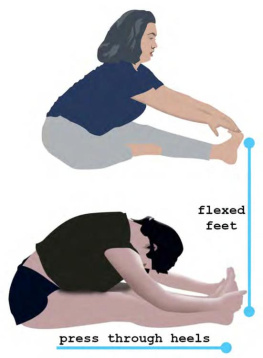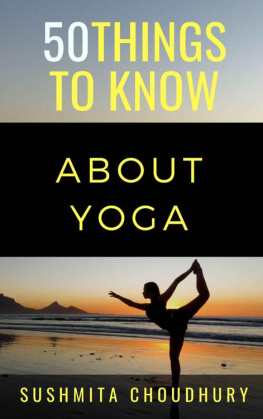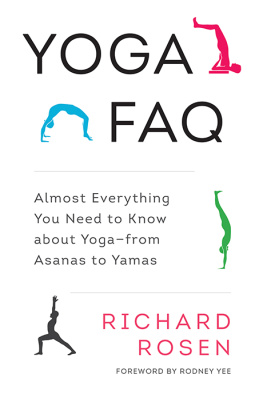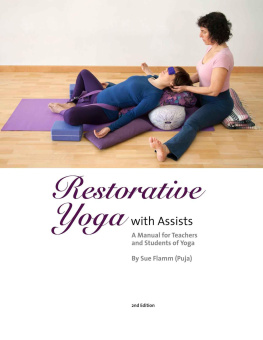Therapeutic Answers to Common Yoga Pose Questions
by Jaimie Perkunas DPT, e-RYT
2nd Print
Copyright Jaimie Perkunas, 2016
All rights reserved. No part of this publication may be reproduced, stored in a retrieval system, or transmitted in any form or by any means, electronic, mechanical, photocopying, recording or otherwise, without the prior permission in writing of the publisher, except in the case of brief quotations embodied in a book review.
Disclaimer
The information presented herein is offered only for informational and educational purposes and is not a substitute for the professional judgment of a medical professional. We strongly recommend that you receive professional medical advice before you perform any techniques, poses, postures or routines presented in this book. The reader and viewer of the information presented in this publication assumes all risks when using the information provided herein. Any information provided in this publication is not intended as a replacement for professional consultations with qualified practitioners. If this publication provides health-related or medical information, no such information provided by this book is intended to treat or cure any disease or to offer any specific diagnosis to any individual as we do not give medical advice, nor do we provide medical or diagnostic services.
Foreword
I have been a student of Jaimie Perkunas for about two years. Like many of her yoga students, I have an orthopedic history that restricted my range of motion pretty severely. I was pretty bionic when I met Jaimie; a total replacement of both hips around fifteen years earlier, and total replacement of both shoulders three years ago. Perhaps just as traumatic, I spent many years seated at a desk, working seventy hours per week. The result of all of this was that, while I was active, playing tennis regularly, practicing tai chi chuan and going to the gym, I was very inflexible. My movement was restricted, and I injured myself pretty frequently. I came to yoga, and to Jaimie, to see what improvement was possible. I was very concerned about the possibility of injury, and took some comfort in the fact that she was a physical therapist.
The results, two years in, have pleased me beyond my most generous expectations. I am far more mobile than I was when I started. Simple things that were difficult at the startsuch as lowering to one knee from a standing positionI now do without hesitation. Having greatly expanded my range of motion and strength, I move better, injure myself less and am pain free.
Like anyone active at my age (Im sixty five), I occasionally strain a muscle or overwork a tendon, and see Jaimie for individual instruction. It is those times when I most appreciate how physical therapy and yoga complement each other. When you have had as much surgery as I have, you get to do a lot of physical therapy. Jaimies approach, using yoga poses as therapy, has proven to be more effective, and far faster, than traditional PT. Yoga seems a far more comprehensive way to recover from injury than the usual physical therapy modalities. It is also a lot more fun to do.
This book contains Jaimies answers to questions from her students, clients and others. Her answers show the anatomy-based approach that she takes to yoga, and to its use in healing. There is a great deal of information here of value for all yoga practitioners, whether or not they are limited in motion by injury or surgery. Her substantial knowledge of the human body informs and enriches yoga practice for everyone. I hope it does for you what it has done for me.
Paul Winick
Tucson, Arizona
March 2016
Dedication
To all my students and clients, who continue to ask me to grow and learn.
Acknowledgements
To my visionary husband who encouraged me to share my knowledge as a physical therapist with my experiences with yoga.
To my Dad, who planted the seed long ago that I would be a yoga teacher.
To my Mom, who has inspired me write this book with her first-hand experiences of yoga challenges.
To Jade Beall for her professional photos throughout the book, and Tom Beall for being my alignment coach during the photo shoot.
To Rebecca Grad for her beautiful drawings of anatomy.
To Barb Duro for editing my newsletters and this book.
To Amanda Beekhuizen for designing and editing this book.
To all my yoga teachers: Rachel Krentzman, Bruce Bowditch, Darren Rhodes, and Christina Sell.
To my colleagues and mentors: Staffan Elgelid, Matthew Taylor, Shelley Prosko, Neil Pearson, Lisa Holland, and the Bridgebuilder community.
To the many students who have asked questions and trusted me to help you with your healing and recovery.
To all my friends near and far, who have encouraged me along the way: Tanya, Rebecca, Gina, and many more.
Thank you Gina Rooney for editing the 2nd print of this book.
Table of Contents
Introduction
I started my first yoga and physical therapy business in 2011, a month after completing my 200-hour yoga teacher training. During the training, I was asked to teach two hours of anatomy to the trainees since I had been a practicing physical therapist for five years. It was at that point when I realized I had something unique to offer to my yoga community. I am very interested in educating yoga teachers and students about anatomy, biomechanics, and injury prevention. I am particularly interested in assuring that yoga continues to be a safe practice for all students, including those with injury, history of past surgeries, or limitations in range of motion or strength.
Within two years of starting my business I started a monthly newsletter which included a section for Q&As. I have been writing a monthly newsletter and answering questions for the last three and a half years and wanted to put these therapeutic answers into a common resource. I hope this resource helps to answer your common yoga questions. I would encourage you to contact me with additional questions or need for clarification. Thank you for your interest in supporting my vision of yoga being appropriate for ANY BODY.
Jaimie Perkunas DPT, e-RYT
www.yogaistherapy.com
one: the lower body
The lower body is the foundation in standing and sitting poses. Although we live our lives with our weight on our lower body whether we are sitting or standing, we are asked in our yoga practices to bring awareness to our lower body with an intention to keep a balance of strength and flexibility. This section will address questions involving the lower body starting from the feet working up to the hips.
Bunions
Can yoga help bunions?
Yes, I believe yoga can, though there is currently no research yet pointing to yoga as a cure for bunions. However, when I was at my first International Yoga Therapy Conference in Boston in 2013, I spoke with Dr. Loren Fishman about an entry he had in Yoga as Medicine. I cant remember the exact page, but I remember reading a paragraph where the author referred to Dr. Loren Fishman as having stated that bunions can be improved by strengthening the abductor hallucis ( hallucis is big toe). When I was at the conference I asked him about this in person. He proceeded to remove his dress shoe and dress sock to demonstrate how to activate the abductor hallucis (the muscle which pulls the big toe away from the second toe).
My theory is that since muscles move bones, thereby addressing muscle imbalances, a change may occur in the alignment of bones or joints. When a bunion forms it causes additional bone growth on the outside of the first metatarsal (big toe knuckle). This increase in bone growth is likely caused from the abductor hallucis tendon being pulled across the lateral (outside) aspect of the joint or from the lateral side of the metatarsal pressing into a tight shoe (narrow toed shoe like high heels or dress shoes). When our bones are subjected to continuous pulling or pressure from pushing or pressing, this can cause increased bone growth which may lead to bunions.
Next page
